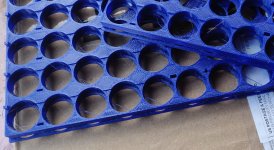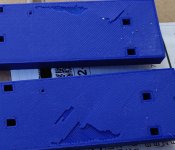hallkbrdz
100 W
Sheet dropped off, parts should get cut either tomorrow or early next week by this monster. Can't wait to get soldering on the nickel and getting this pack completed.



Pouch AMP20M1HD-A C-rate and max amps are not right in your tablehallkbrdz said:https://drive.google.com/file/d/17zbJZlLocxkfjNDHHixH1WDFVqIe6gAd/view?usp=sharing
nuxland said:Pouch AMP20M1HD-A C-rate and max amps are not right in your table
Due of that also my 4kwh battery specs are wrong in your excel.
As I know AMP20M1HD-A has 15C or 300A.
hallkbrdz said:Spot welding... been there, tried that. MAYBE that is possible with a high power spot welder, but defiantly not with a KWeld (it will just timeout at 200ms). The thick copper bus bar absorbs the heat energy too quickly.
Also using a MOT solder station does not work well. For me that was because of the wide surface area and differences in expansion rates. But it is great for any connector you want soldered. However, for large cable crimps I bought a hydraulic crimper and am using that instead.
So shake and bake it is...Although a fluxless solder might work better.



